Joanne discusses the objects for dining she is currently working on, and shares what she sees as the significance of dining rituals.
THESIS WORK features the work emerging from the Thesis Research & Design studios and seminars. Over the course of the TRD1 & TRD2 studios, graduate students develop their individual research topics in preparation for their thesis. The intention is to establish a theoretical, historical, and intellectual framework through a diversity of representational modes such as mapping, diagramming, photo essays, writing.
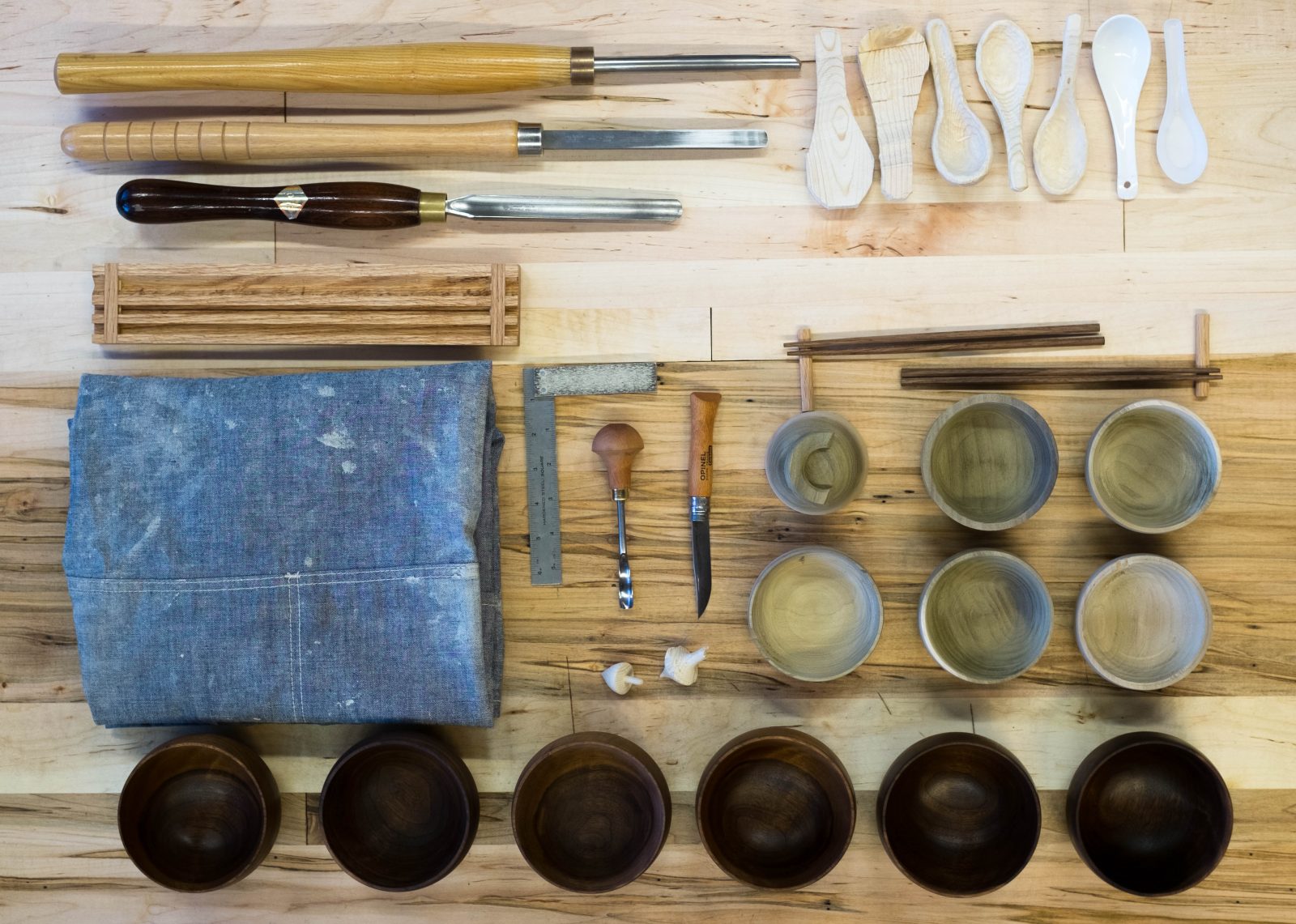
Jonas Chin: Tell me about what you are working on.
Joanne Yau: I am making a dining set to explore a sense of place in daily routines and rituals. So far I have finished chopsticks and wooden bowls. I am working on carving wooden spoons right now. I will also be making other dishes, drinkware, flatware, and, furniture as part of the dining set.
C: What does this mean to you?
Y: Well, I have always wanted to learn woodworking and how to throw pottery, so on one hand this is an excuse to do those things and still be productive in my thesis at the same time. I also think the idea of daily routines and rituals is interesting because it is something that we all experience very often. Here, we can think about how as architects and designers we really have an impact and how we really fit in the vernacular. My thesis is not some grand gesture like a public building or a performance space, but something simple and subtle – the modest ways in which design affects us.
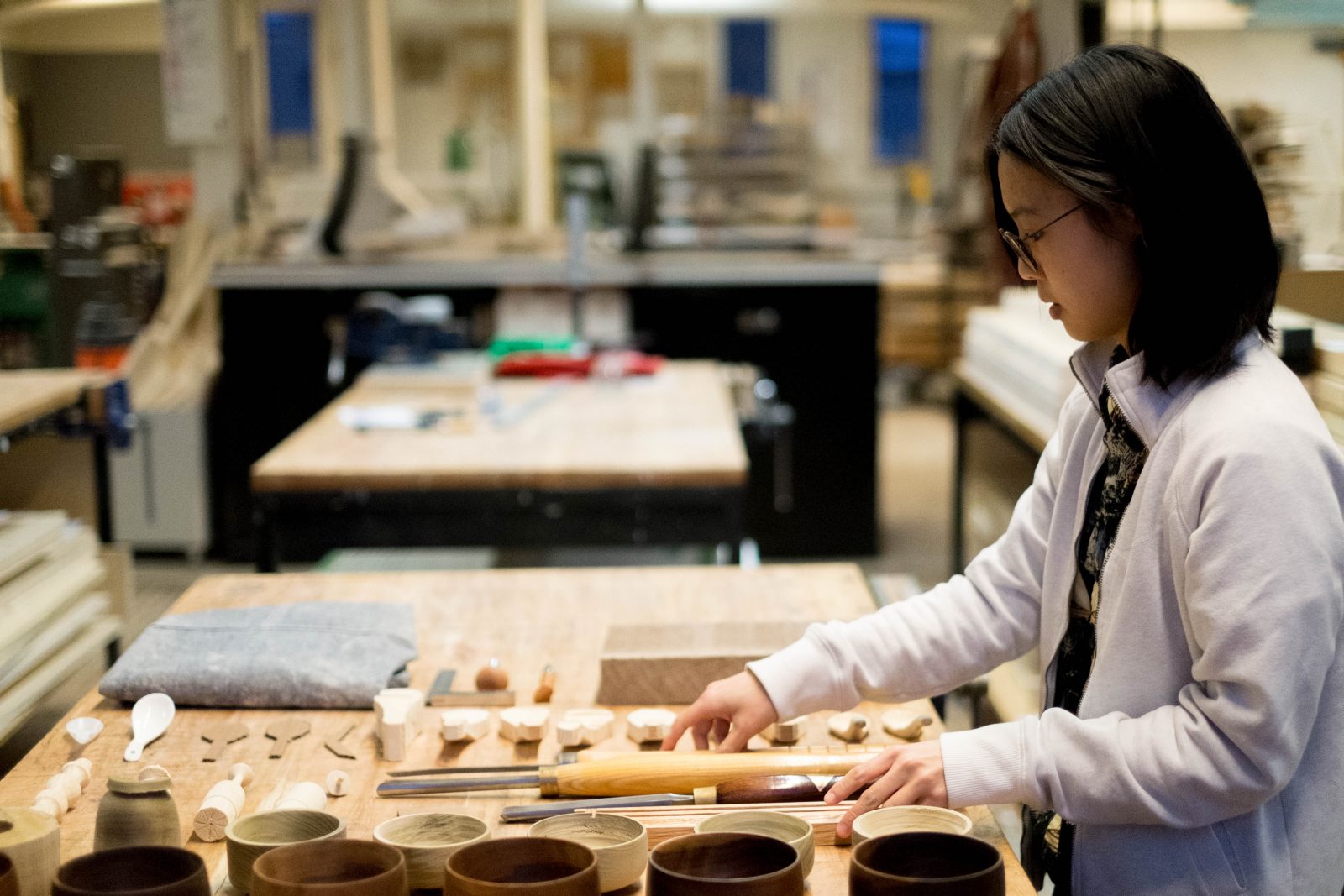
C: Whenever I look into how people tie architecture into dining, there is an urge to reinvent dining and redesign the rituals through the intervention of architecture. Is what you are doing distilling the simplest form of dining?
Y: I guess so, there is definitely a sense of trying to see what is happening in the everyday, and what is valuable there. I’m trying to find what routines and rituals are already practiced, what is meaningful and the ways we can bring delight to them. It isn’t reinventing the wheel. I don’t imagine this to be part of a gastronomic restaurant. It’s just for breakfast or lunch, when I am eating at home or having people over. Nothing too fancy.
C: Do you imagine this to be a domestic setting, where people at the table probably know each other already, perhaps involved in a host-guest relationship, rather than a setting for complete strangers to dine together?
Y: Strangers can come together as well, but there is a sense of common ground at some level. Sometimes I think about how my roommates and I usually invite people over for potlucks. I do not necessarily know my roommate’s friends very well but we have enough of a connection to celebrate a mutual friend’s birthday. It is a nice way to enjoy one another’s company and spend time with one another in a very intentional way. It’s where we can talk about what’s on our minds and dig into each other’s thoughts without any sort of distractions, even if we are strangers. It is just about food, people and where we are.
C: You mentioned that you are designing these pieces to compose a dining experience. In the end, will your set be a space with objects that go into it?
Y: I will have the objects that go into a space, but I’m not designing the space itself. These objects provide the opportunity to have certain interactions with the food but they can be located anywhere. They can be located in my dining room, out in the fields, or in the middle of the shop here, as long as the space allows. It is not necessarily tied to a specific location or a building.
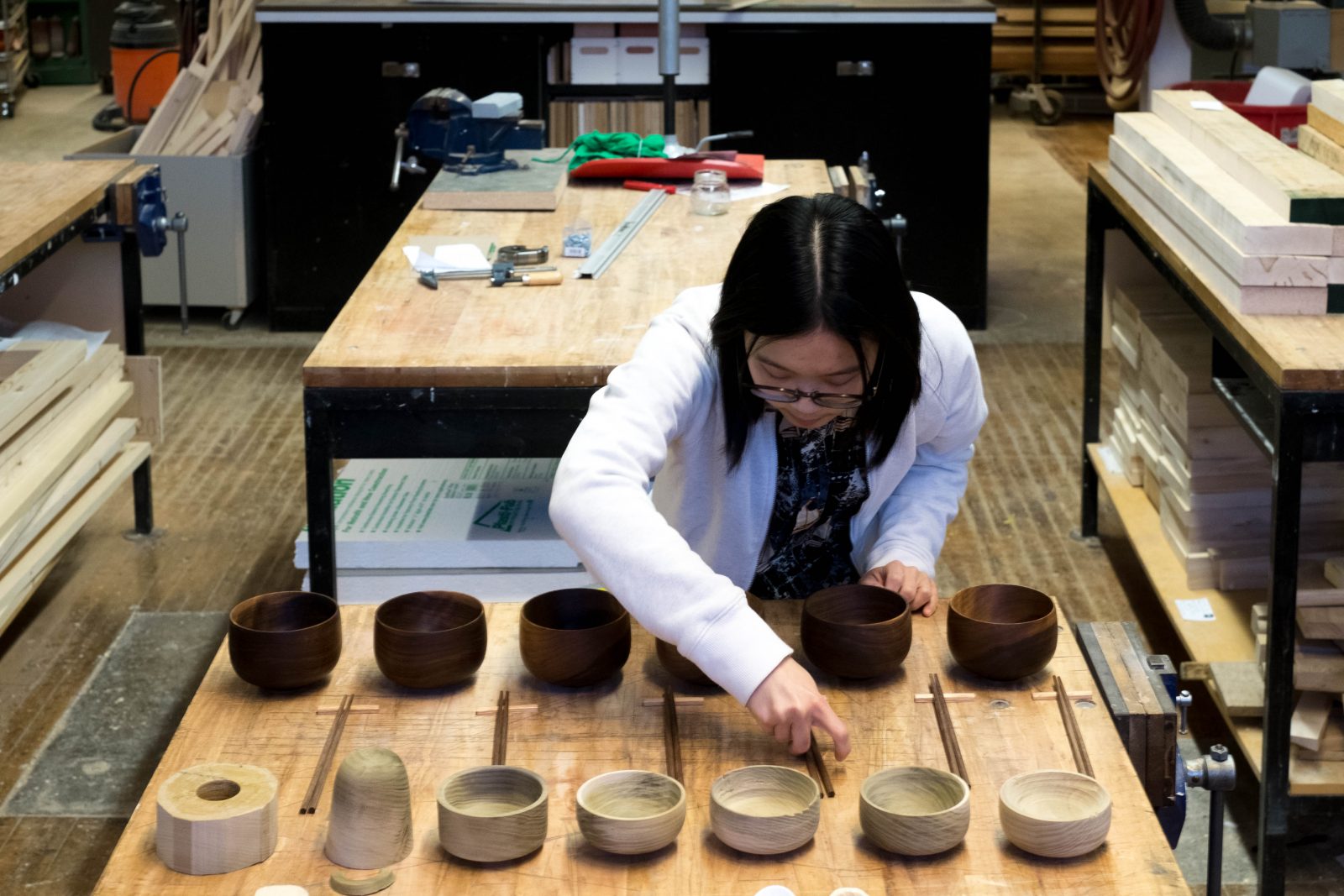
C: What about the atmosphere?
Y: I think that will change depending on where the pieces are located. Being out in the field will be very different than being in the shop. These items are cultural tied and inherently presupposes some sort of tradition or custom, like a fork and a knife would be part of a Western tradition, or chopsticks, for example is part of an East Asian tradition. Even the type of spoon you are using differs between different cuisines.
C: Are you saying that whatever you design has a direct impact on how people are going to interact during the dining in space? I am wondering, when we look at the design of the space, or the idea of tables and utensils, how are people’s interactions subconsciously affected by the organization of the objects in space?
Y: I don’t think we should have control over people and encapsulate every thought and action. Architecture should not be manipulative. It should provide opportunities for people to use a building and design however they want. For example, when I was making these bowls, I was very conscious of the fact that people will be holding these bowls. This is a bowl for soup and rice, so you will pick it up and eat out from it. It has to be comfortable in the palm of your hands, it cannot be too tall because you are likely to use chopsticks to pick things out of it, and it cannot be too big or too heavy so you can pick it up easily. When I am thinking about these spoons I am not really projecting what people are thinking when they use it but whether or not it works the way it should when being in use, it should be able to scoop things up and be comfortable in the hand.
C: Why do you think dining is important as a ritual, and not simply a process where we feed ourselves? As a ritual we come together to break bread and share company, but now we are moving further away from such practices. Is dining important in the way it shapes relationships we share with others?
Y: I remember reading “On the Pleasures of of the Table” in the Physiology of Taste by Jean Anthelme Brillat-Savarin, where he wrote about how a dining event is enjoyed. When people arrive for dinner they are hungry and they just want to eat. Until they are fed and their baseline needs are met, they cannot move on to discuss higher level forms of thinking: conversations about life outside the immediate forms of necessity. Without feeling satisfied, it is difficult to enjoy one another’s company. I think the dining event is one moment that condenses the feeling of finding delight when one is safe, secure and full.
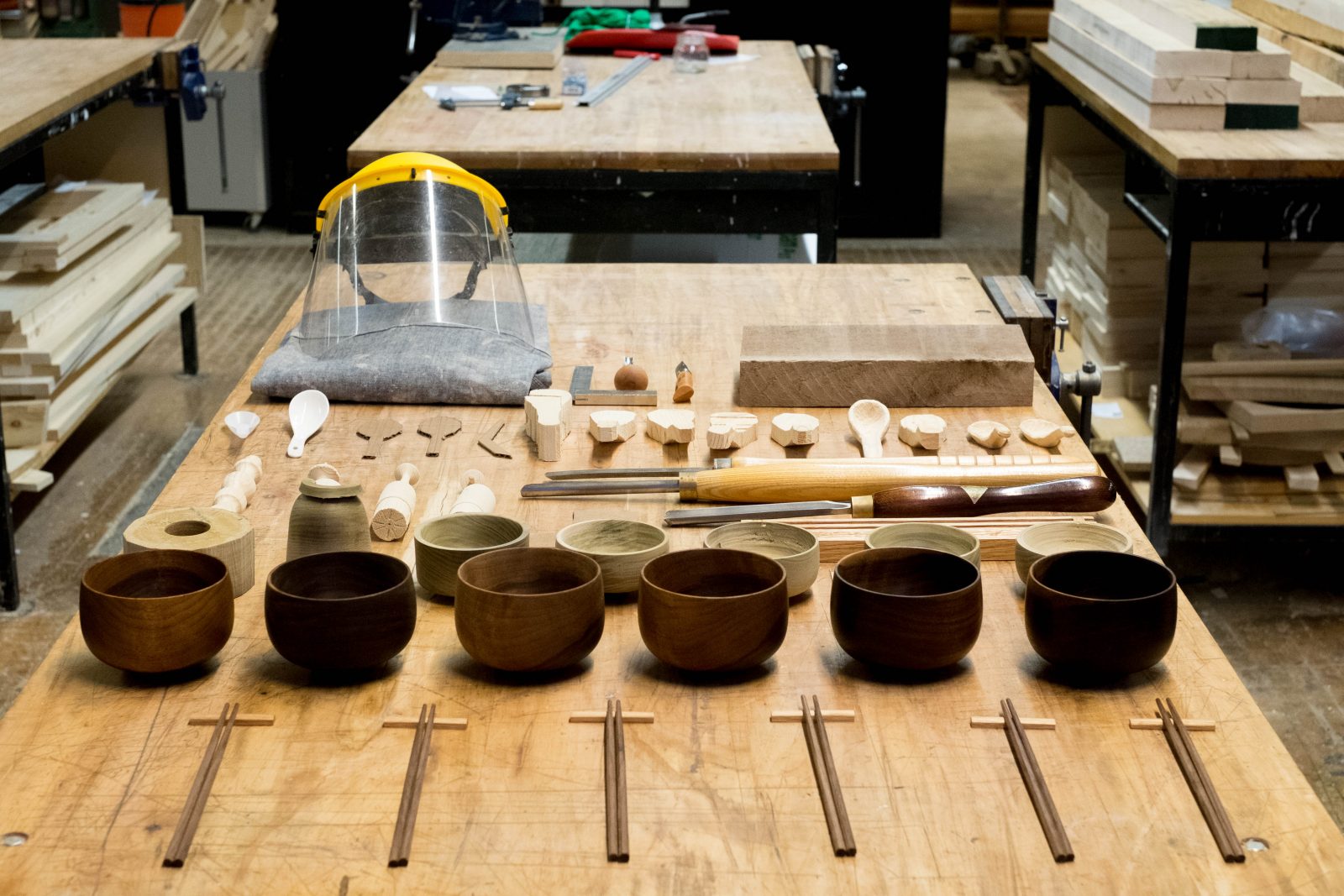
C: Why do we dine with other people? It seems that this set is produced for us to be sharing the ritual, not as a individual act.
Y: I think food is always better enjoyed when there are other people, either when everybody is participating and cooking the meal together, or having the opportunity to serve someone as a host. When I imagine taking a break from my work, it is always to have company.
C: Some people want that moment of solitude.
Y: The set doesn’t force someone to eat with another person. A set of 6 provides an opportunity for one person or two, four, six to have a meal. Sometimes we do eat alone and that is perfectly fine. As students most of us are not married, we live with roommates but our schedules do not always line up, so inevitably we eat alone. Even during lunch in school we are pretty much alone when no one else is in the lounge area. It is nice to have that quiet time to reflect.
C: What is the process of your work?
Y: I started with making bowls and chopsticks. In making the bowls, I was learning to turn wood for the first time. I practiced on some yellow poplar bowls (2” tall and 4” in diameter) after Dan showed me how to spindle turn and bowl turn. Then I made the walnut bowls that are part of the table setting. For the chopsticks, I made a jig with 3 slots: 2 rectangular slots to taper the blanks into 4 sided chopsticks, and a 45 degree angled slot to chamfer the 4 sided chopsticks to have 8 sides. Now I am carving these practice spoons out of spruce to test some forms I am considering and to build up the skills I need to eventually make nicer spoons. That isn’t to say that my woodturning skills are that great though. It is enough to be an adequate beginner in which I have enough familiarity with the tools to make simple shapes.
C: Because the shapes are so simple, every curve and detail matters so much more when it comes to such a small object. What will happen after the spoons?
Y: I am trying to throw some pot and bowls for the end of the term, and also carve serving utensils. I have an individual place setting with bowls, spoons and chopsticks, and I will also have a few more items for a serving set.
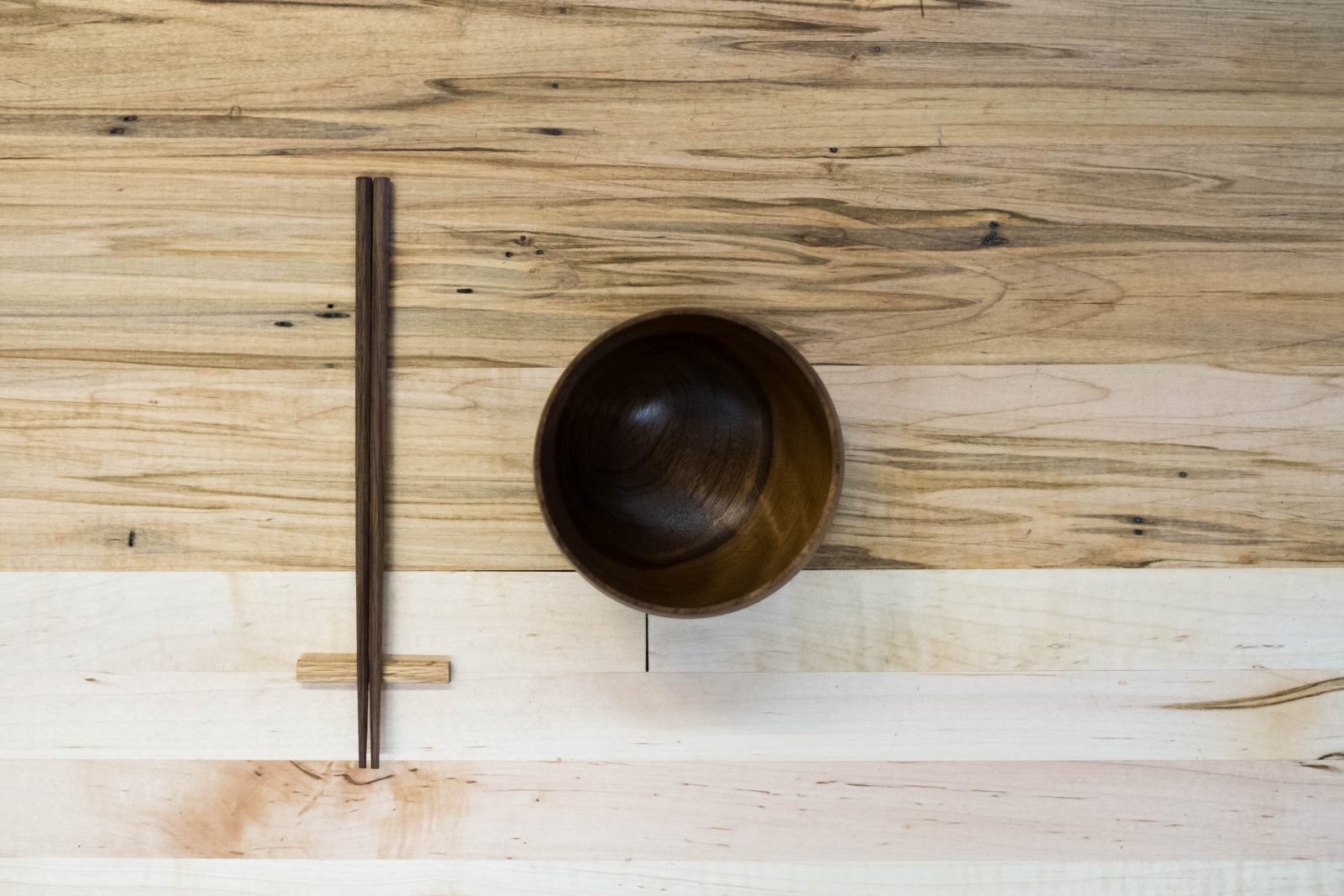
C: Will hosting a dinner be part of the project?
Y: Yes definitely! I have been eating with the chopsticks and out of the bowl to make sure the finish works. I am actually hoping to drink hot soup out of them but I am kind of hesitant to try that right away. There are 7 layers of varnish oil already, but one of the bowls had its grain raised when I ate out of it. I might need to sand and refinish it.
C: There are sake cups in Japan made out of Japanese cypress, I believe they are called Hinoki. Are they water resistant?
Y: Yes, it can be used for bathtubs. Japanese dining ware is often coated with lacquer to water seal it. Unfinished cypress also has a strong taste and it affects how the food tastes. Walnut also has a bit of a taste, but Hinoki smells very sharp.
C: Anything else you would like to add?
Y: Not really, this is very much a work- in-progress, not exactly a finished set or even a finished idea. Through making these objects I am hoping to explore different themes. I am not really sure how to tie them all together at the end of the day. I am just trying my best to document what is happening on the day-to-day of making these, and think about what goes into designing something that works well for these everyday objects. There is also a cultural aspect to this that I have not dived into too much into yet. It almost seems anecdotal and purely based off of my intuition, so I know I will research that more.
C: Is there an Asian approach to this?
Y: So far these items are part of a Chinese table setting. I am still trying to make forks,knives and metal soup spoons as well. I just started with the Chinese implements with these because they are easier to make. The jig and chopsticks are approachable projects to make as a beginner woodworker, and making bowls is an easy way to start woodturning.
C: I think that is about it. Thanks Joanne!
Y: No problem.
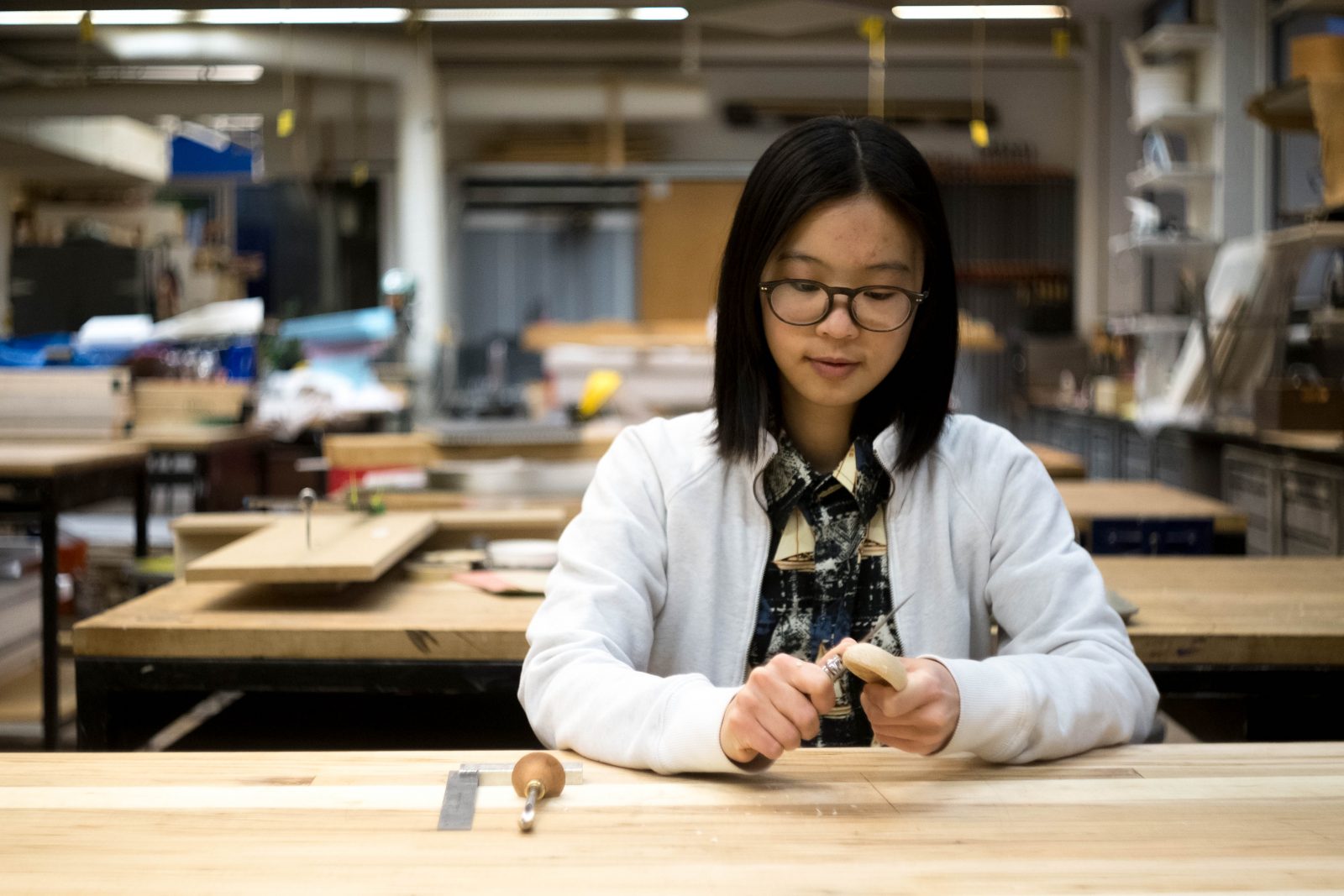
Jonas Chin is a M.Arch candidate at the University of Waterloo School of Architecture. He is currently the director of Bridge. His research is directed toward how architecture can facilitate a change in the way we dine




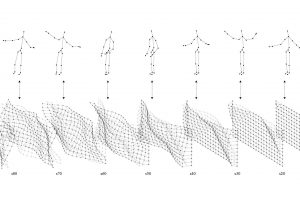
Leave a Reply